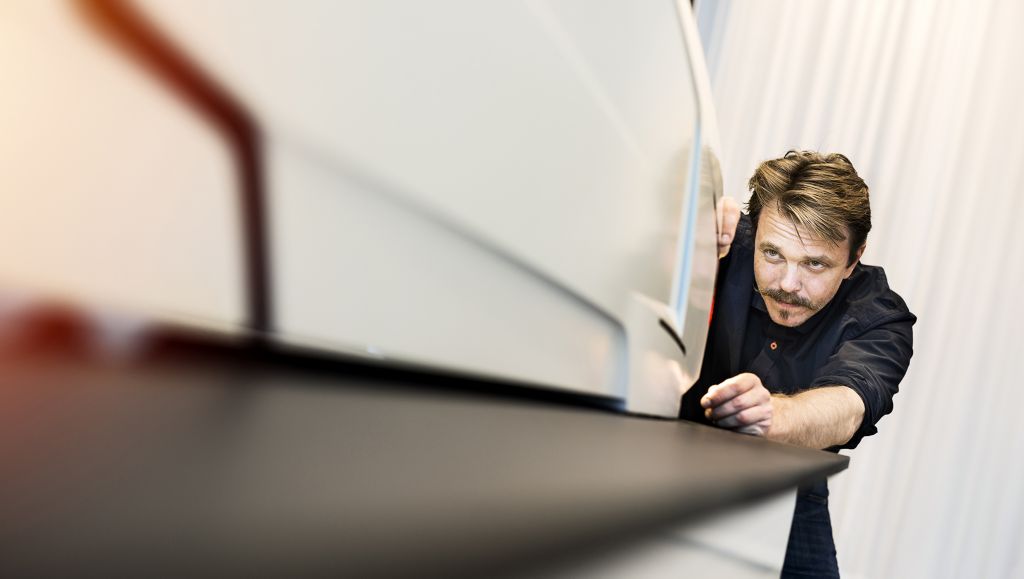Refining aerodynamics – a balancing act


The latest model of Volvo FH was launched in 2013. Larger, safer, and even more ergonomic than its predecessor, the new truck set the benchmark high within the long-haul sector. The upgrade also featured changes to the truck’s aerodynamics. As the Volvo FH is specifically designed for long-haul and therefore mostly driven at speeds of 70 kph and above, it has much to benefit from such aerodynamic advancements.
Refining an already well-honed vehicle even more was a challenging assignment for Joakim Sällberg and his colleagues at Volvo Trucks in Gothenburg. “Despite the cab being one square metre larger, we managed to improve the aerodynamics. The balance on the truck is most important. When making modifications, we must look at the whole truck, rather than focusing too much on one particular area or component. It is always a combination of factors.”
Changes have been made to several areas of the latest Volvo FH, but the most radical and improved features are the accelerated curves at the front sides of the truck. These offer the possibility for increased fuel economy, as they significantly cut down the air drag on the vehicle. Such targeted aerodynamic adjustments can play a crucial role in an industry where tonnage per kilometre is measured in terms of financial profit.
Modified air deflectors, wheel arch area, bumper spoiler and mudguards also contribute to the improved performance of the Volvo FH at speed. Furthermore, the team also managed to create one square cubic metre of interior space without adversely affecting the truck’s aerodynamics. According to Joakim Sällberg, making any change to the truck is a balancing act.
“Whether it’s the front, under the truck and trailer or the rear end, all parts affect each other in terms of aerodynamics. In the design phase, we are using the gap and flush measurement to determine fit and alignment between surfaces. For example, when developing the accelerated curves on the latest Volvo FH, we had to take into account how dirt spread on the truck when we changed the design. Finding a solution to this involved working with the complete vehicle.”
The modern truck design process is advanced and complex, yet Joakim Sällberg describes himself as a ‘pen and paper designer’ working within a fluid set-up of around 15-20 people, involved in different phases of different projects.
Whether it’s the front, under the truck and trailer or the rear end, all parts affect each other in terms of aerodynamics.
“The needs of the customer are first and foremost when making these aerodynamic improvements. This is always the case, whatever we are working on. It is important to us that our customers are able to grow with the design, and that the trucks should have on-road longevity. Every design quality we apply always incorporates Volvo’s core values. It is at the heart of everything we do.”
Title: Senior Designer
Age: 40
Years at Volvo: 10